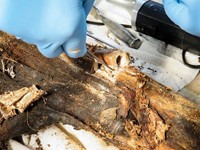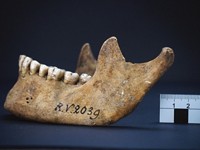Advertisement
Grab your lab coat. Let's get started
Welcome!
Welcome!
Create an account below to get 6 C&EN articles per month, receive newsletters and more - all free.
It seems this is your first time logging in online. Please enter the following information to continue.
As an ACS member you automatically get access to this site. All we need is few more details to create your reading experience.
Not you? Sign in with a different account.
Not you? Sign in with a different account.
ERROR 1
ERROR 1
ERROR 2
ERROR 2
ERROR 2
ERROR 2
ERROR 2
Password and Confirm password must match.
If you have an ACS member number, please enter it here so we can link this account to your membership. (optional)
ERROR 2
ACS values your privacy. By submitting your information, you are gaining access to C&EN and subscribing to our weekly newsletter. We use the information you provide to make your reading experience better, and we will never sell your data to third party members.
Infectious disease
New insights into 1918 flu pandemic from samples in a Berlin museum
Researchers say the virus changed between waves and became the H1N1 strain we know today
by Laura Howes
May 19, 2022
| A version of this story appeared in
Volume 100, Issue 18

In 1918, people started getting sick. Really sick. A new strain of influenza had arrived, and it quickly spread, becoming a global pandemic that killed millions. Researchers have now pieced together the virus’s genetic code using samples from three people who died of the flu to uncover how the virus changed during the pandemic (Nat. Commun. 2022, DOI: 10.1038/s41467-022-29614-9).
When virologist Sébastien Calvignac-Spencer of the Robert Koch Institute visited the Berlin Museum of Medical History, he was looking for historical samples he could use to test how to extract viral information from preserved tissues. When he found lung samples from 1918 in the basement, he says, it seemed like a natural place to start. He wasn’t hopeful, but he assembled a team to look for preserved viral RNA. They found some.
The researchers managed to find and read flu RNA in 3 of the 13 specimens eventually tested. Two of those samples came from young soldiers who died in Berlin, and the other came from a young woman who died in Munich.
The researchers compared their new genomes to the only other known sequences of the 1918 flu—one from a woman buried in Alaskan permafrost and the other from a soldier in New York. They found that the genetic code for the 1918 flu changed considerably over time, altering key proteins like the RNA polymerase and the nucleoprotein. The team says these mutations might explain why the virus’s behavior changed during the pandemic. The sequences also suggest that the seasonal H1N1 flu descends from the 1918 pandemic strain.




Join the conversation
Contact the reporter
Submit a Letter to the Editor for publication
Engage with us on Twitter